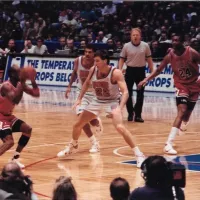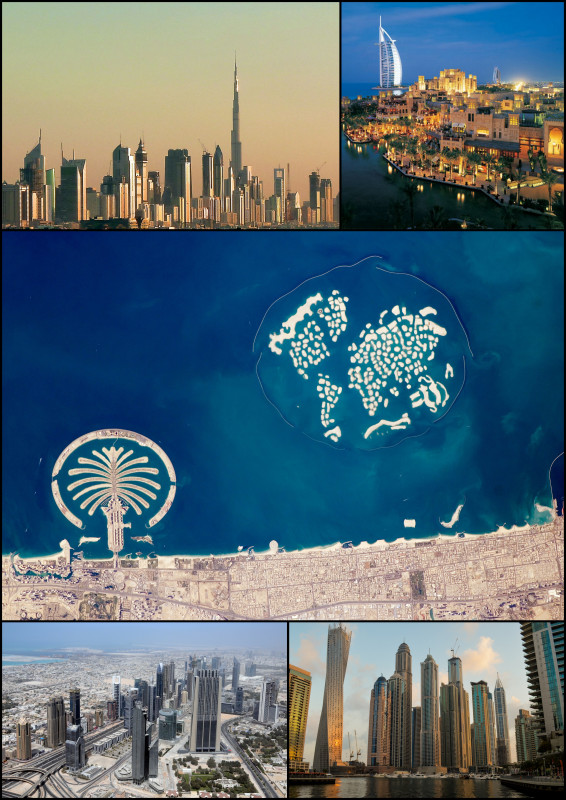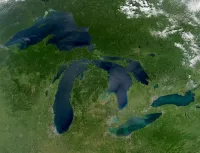Toronto is the most populous city in Canada and the capital of Ontario. With a population of approximately 2.8 million in 2021, it ranks as the fourth-most populous city in North America. It is the anchor of the Golden Horseshoe, a large urban agglomeration, and the Greater Toronto Area. A major international hub, Toronto is a center for business, finance, arts, sports, and culture. The city is known for its multicultural and cosmopolitan atmosphere.
1920: Toronto Regional Real Estate Board Formed
The Toronto Regional Real Estate Board (TRREB), formerly the Toronto Real Estate Board, was formed in 1920.
1924: Establishment of the Badminton and Racquet Club
In 1924, the Badminton and Racquet Club was established in Toronto.
1931: Toronto Coach Terminal Opens
From 1931 to 2021, the Toronto Coach Terminal served as the city's intercity coach hub.
1936: Highest Temperature Recorded in Toronto
The highest temperature ever recorded in Toronto was 40.6 °C (105 °F) on July 8, 9 and 10, 1936, during the 1936 North American heat wave.
1954: Construction on floodplains outlawed after Hurricane Hazel
Following Hurricane Hazel in 1954, Toronto outlawed the construction of buildings on floodplains and began purchasing private lands for conservation efforts.
1958: Hockey Hall of Fame moved to Toronto
In 1958, the Hockey Hall of Fame was established in Toronto.
1959: St. Lawrence Seaway Completion
In 1959, the completion of the St. Lawrence Seaway gave ships access to the Great Lakes from the Atlantic Ocean, affecting Toronto's industrial sector.
1967: First Caribana festival
In 1967, the first Caribana festival took place as the Caribbean community celebrated Canada's Centennial.
1976: CN Tower Completion
In 1976, the CN Tower was completed at a height of 553.33 metres (1,815 ft 5 in). It served as a telecommunications and tourism hub.
1981: Visible Minority Groups in Toronto
In 1981, 13.6 per cent of Toronto's population belonged to a visible minority group.
1986: Molson Indy Toronto began
In 1986, the Champ Car's Molson Indy Toronto began. It would later be known as the Honda Indy Toronto.
1990: Gooderham & Worts Distillery stopped spirit production
In 1990, the Gooderham & Worts Distillery ceased production of spirits. The Distillery District is now preserved as the largest and best-preserved collection of Victorian industrial architecture in North America.
1991: Previous Record for Murders
In 1991, Toronto's previous record for murders was 89, with a rate of 3.9 murders per 100,000 people.
1992: Toronto Blue Jays won the World Series
In 1992, the Toronto Blue Jays won their first World Series title.
1993: Toronto Blue Jays won the World Series
In 1993, the Toronto Blue Jays won their second World Series title.
1994: Union Stockyards moved out of Toronto
In 1994, the Union Stockyards, formerly located in The Junction area of Toronto, moved out of the city.
1995: Toronto Raptors entered the NBA
In 1995, the Toronto Raptors basketball team entered the NBA.
1996: Restoration of the Don Valley Brick Works
In 1996, the Don Valley Brick Works, a former industrial site that opened in 1889, was partly restored as a park and heritage site, with further restoration completed in stages since then.
1996: Toronto was a candidate city for the 1996 Summer Olympics
Toronto was a candidate city for the 1996 Summer Olympics, which were awarded to Atlanta.
1997: Gang-related incidents on the rise
Between 1997 and 2005, over 300 gang-related homicides occurred in Toronto, leading to the Ontario government developing an anti-gun strategy.
1999: Toronto Rock appeared in an NLL-record five straight championship games
From 1999 to 2003, the Toronto Rock appeared in an NLL-record five straight championship games.
1999: Downsview Park Initiates Design Competition
In 1999, Downsview Park, a former military base in North York, initiated an international design competition to realize its vision of creating Canada's first urban park.
1999: Low Number of Homicides
In 1999, Toronto recorded 47 homicides, which was the lowest number the city had recorded since then up to 2011.
May 2000: "Tree City" Winner Announced
In May 2000, the winner of the Downsview Park design competition, "Tree City", was announced.
2000: Creation of the MaRS Discovery District
In 2000, the MaRS Discovery District was created to capitalize on research and innovation in Ontario.
2000: Toronto Architectural Revival
Since 2000, Toronto has experienced a condo construction boom and architectural revival, with buildings opened by world-renowned architects like Daniel Libeskind, Frank Gehry, and Will Alsop.
2001: Language Use in Toronto
In the 2001 Canadian census, the collective varieties of Chinese and Italian are the most widely spoken languages at work after English in Toronto.
2003: Toronto Rock appeared in an NLL-record five straight championship games
From 1999 to 2003, the Toronto Rock appeared in an NLL-record five straight championship games.
2005: "Year of the Gun"
In 2005, Toronto media coined the term "Year of the Gun" due to a record number of gun-related homicides, with 52 out of 80 homicides being gun-related.
2006: Foreign-born Population
In 2006, the city's foreign-born persons comprised 49.9 per cent of the population.
2006: Homicides Drop
In 2006, the total number of homicides in Toronto dropped to 70, but nearly 2,000 people were victims of violent gun-related crimes.
2006: Change in term length for Toronto's mayor and city councillors
Until the 2006 municipal election, the mayor and city councillors in Toronto served three-year terms.
2007: Homicides with guns
In 2007, 86 homicides were committed in Toronto, with roughly half involving guns.
2007: Toronto FC entered the MLS
In 2007, Toronto FC entered the league as an expansion team.
2007: Toronto Homicide Rate
In 2007, Toronto's homicide rate was 3.43 per 100,000 people, which was lower than that of Atlanta, Boston, Los Angeles, and New York City.
2007: CN Tower surpassed as world's tallest
In 2007, the CN Tower was surpassed by the Burj Khalifa in Dubai as the world's tallest freestanding structure.
2007: Molson Indy Toronto became Honda Indy Toronto
In 2007, the Champ Car's Molson Indy Toronto was known as the Honda Indy Toronto.
2007: International Bowl began in Toronto
In 2007, the International Bowl, an NCAA sanctioned post-season college football game, began being played annually at Rogers Centre in Toronto.
2007: Toronto Ranked as Safest Banking System
Toronto was ranked as the safest banking system in the world starting in 2007 according to the World Economic Forum.
2008: Buffalo Bills games played in Toronto
In 2008, the Buffalo Bills began playing home games in Toronto as part of a lease agreement.
2008: Toronto Public Library averages higher circulation per capita
In 2008, the Toronto Public Library averaged a higher circulation per capita than any other public library system internationally.
2008: Toronto was a candidate city for the 2008 Summer Olympics
Toronto was a candidate city for the 2008 Summer Olympics, which were awarded to Beijing.
2010: Immigration to the Greater Toronto Area
In 2010, it was estimated over 100,000 immigrants arrived in the Greater Toronto Area each year.
2010: International Bowl in Toronto ended
In 2010, the International Bowl was played for the last time in Toronto.
2010: City Council establishes Waste Diversion Task Force 2010
In 2010, the Toronto City Council had about 40 subcommittees and advisory committees, including the Waste Diversion Task Force 2010.
2010: Comparison to the Vancouver Winter Olympics
The 2015 Pan American Games in Toronto were double the size of the 2010 Winter Olympics in Vancouver, British Columbia, in terms of athletes competing.
November 2011: Line 5 Eglinton Construction Begins
In November 2011, construction began on Line 5 Eglinton.
2011: Toronto as a major film production centre
As of 2011, Toronto ranked as the third-largest production centre for film and television after Los Angeles and New York City.
2011: Visible Minority Groups in Toronto
In 2011, 49.1 per cent of the residents of the city proper belonged to a visible minority group.
2011: Murder Rate Plummets
In 2011, Toronto's murder rate plummeted to 51 murders, a nearly 26% drop from the previous year, marking the lowest number since 1999.
2011: Impoverished Seniors Increase
The number of impoverished seniors in Toronto increased from 10.5 per cent in 2011.
2012: Homicide Rates
From 2012 to 2015, Toronto experienced a nearly flat line of 57-59 homicides.
2012: Ontario Place closed after declining attendance
In the spring of 2012, Ontario Place closed due to declining attendance, although the Budweiser Stage and harbour continued to operate. The Cinesphere was no longer in use.
2013: GO Transit Ridership
In 2013, GO Transit carried over 250,000 passengers every weekday and 57 million annually.
2013: End of Buffalo Bills games played in Toronto
In 2013, the agreement for the Buffalo Bills to play home games in Toronto ended.
2013: Toronto's Child Poverty Rate
Toronto's 2013 child poverty rate was 28.6 per cent, the highest among large Canadian cities of 500,000 or more residents.
October 2014: Average Monthly Social Assistance Caseload
The average monthly social assistance caseload for Toronto from January to October 2014 was 92,771.
2014: Impoverished Seniors Increase
The number of impoverished seniors in Toronto increased to 12.1 per cent in 2014.
2014: Toronto Ranked as Safest Banking System
Until 2014, Toronto was ranked as the safest banking system in the world according to the World Economic Forum.
June 2015: Union Pearson Express Service Begins
In June 2015, the Union Pearson Express (UP Express) train service began carrying passengers between Pearson International Airport and Union Station.
July 2015: Toronto hosted the 2015 Pan American Games
Toronto hosted the 2015 Pan American Games in July 2015.
August 2015: Toronto hosted the 2015 Parapan American Games
Toronto hosted the 2015 Parapan American Games in August 2015.
November 6, 2015: USL W-League ceases operation
On November 6, 2015, the USL W-League announced that it would cease operation ahead of the 2016 season.
2015: Homicide Rates
From 2012 to 2015, Toronto experienced a nearly flat line of 57-59 homicides.
2015: Funding Promised for Line 6
In 2015, the Ontario government promised to fund Line 6 Finch West, which was to be completed by 2024.
July 2016: Toronto's Unemployment Rate
Toronto's unemployment rate was 6.7 per cent as of July 2016.
2016: Mandarin Proficiency
Approximately 55 per cent of respondents who reported proficiency in a Chinese language reported knowledge of Mandarin in the 2016 census.
2016: Daily Hive Opened Toronto Office
Daily Hive, Western Canada's largest online-only publication, opened its Toronto office in 2016 after acquiring Torontoist from Gothamist.
2016: Visible Minority Groups in Toronto
In 2016, 51.5 per cent of the residents of the city proper belonged to a visible minority group.
2016: Toronto hosted the 65th NBA All-Star game
In 2016, Toronto hosted the 65th NBA All-Star game, the first to be held outside the United States.
2016: Homicide Increase
In 2016, Toronto saw a rise in homicides, reaching 75 for the first time in over eight years.
2016: Toronto Population Demographics
In 2016, persons aged 14 years and under made up 14.5 per cent of the population, and those aged 65 and over made up 15.6 per cent. The median age was 39.3 years.
2016: Toronto's Ethnic Origins
In 2016, the three most commonly reported ethnic origins overall in Toronto were Chinese (12.5 per cent), English (12.3 per cent) and Canadian (12.0 per cent).
2016: Toronto CMA Population Census
In the 2016 census, the Toronto CMA had a population of 5,928,040.
2016: USL W-League ceased operation ahead of the 2016 season
On November 6, 2015, the USL W-League announced that it would cease operation ahead of the 2016 season.
2017: Toronto's Cost of Living and Purchasing Power
According to Numbeo, in mid-2017, Toronto's cost of living plus rent index was second highest in Canada and the local purchasing power was the sixth lowest.
2017: Toronto FC won the MLS Cup and Supporters' Shield
In 2017, Toronto FC won the MLS Cup and the Supporters' Shield for best regular season record.
2017: Homicide Decrease
In 2017, Toronto experienced a drop-off of 10 murders, closing the year at 65, with a homicide rate of 2.4 per 100,000 population.
2017: Toronto Tech Job Market
In 2017, Toronto tech firms offered almost 30,000 jobs.
2017: Toronto Wolfpack began play in Rugby Football League
In 2017, the Toronto Wolfpack began play in the Rugby Football League's League One competition.
2018: Record Number of Homicides
In 2018, Toronto reached a record 98 homicides, including fatalities from the Toronto van attack and the Danforth shooting, resulting in a homicide rate of around 3.6 per 100,000 people.
2018: Toronto tourism generated billions
In 2018, Toronto saw 27.5 million tourists visit, generating $10.3 billion in economic activity.
2018: Toronto City Council reduced to 25 councillors
Since the 2018 municipal election, the Toronto City Council has comprised 25 councillors.
May 2019: Canadian Women's Hockey League ceased operations
In May 2019, the Canadian Women's Hockey League ceased operations.
2019: Homicides and Shooting Incidents
In 2019, homicides in Toronto dropped to 80, but shooting incidents increased to an all-time high of 492.
2019: Transit Plan Released
In 2019, the Government of Ontario released a transit plan for the Greater Toronto Area, including the Ontario Line, Line 1 extension, Line 2 extension, and an extension for Line 5 Eglinton to Toronto Pearson Airport.
2019: Toronto Raptors won their first NBA title
In 2019, the Toronto Raptors won their first NBA title.
2020: Union Station Bus Terminal Completion
Construction on a new Union Station Bus Terminal in Toronto is expected to be completed in 2020.
2020: Decrease in Homicides
In 2020, Toronto saw another decrease in homicides, with a total of 71 murders for the year, a rate of around 2.6 per 100,000 people.
2020: City of Toronto's approved operating budget
In 2020, the City of Toronto had an approved operating budget of CA$13.53 billion.
2020: Toronto Wolfpack withdrew from the Super League
In 2020, the Toronto Wolfpack withdrew from the Super League due to COVID-19 restrictions.
2020: Toronto Six began play with the 2020-21 season.
The Toronto Six, the first Canadian franchise in the National Women's Hockey League, began play with the 2020–21 season.
2021: Immigrant Population in Toronto
According to the 2021 census, immigrants comprise 1,286,145 persons or 46.6 per cent of the total population of Toronto.
2021: Religious Groups in Toronto Census
According to the 2021 census, religious groups in Toronto included:
2021: Toronto CMA Population Census
At the census metropolitan area (CMA) level in the 2021 census, the Toronto CMA had a population of 6,202,225.
2021: Increase in Homicides
In 2021, Toronto experienced an increase in homicides, with murders increasing to 85, giving the city a homicide rate of 3.04 per 100,000 people.
2021: Golden Horseshoe Population
In 2021, the Golden Horseshoe, an urban agglomeration surrounding Lake Ontario, had a population of 9,765,188 people.
2021: Toronto Coach Terminal Decommissioned
In 2021, the Toronto Coach Terminal was decommissioned after serving as the city's intercity coach hub since 1931.
2021: Toronto Wolfpack changed ownership and played in the North American Rugby League
In 2021, the Toronto Wolfpack's ownership changed, and the team played in the newly formed North American Rugby League tournament as 'Team Wolfpack'.
2022: Homeless deaths in Toronto
In 2022, 187 homeless people died in Toronto, with drug toxicity being the leading cause.
2022: Decrease in Murders
In 2022, a decrease in murders happened with 71 being reported, a murder rate of 2.5 per 100,000.
2023: Slight increase in homicides
In 2023, Toronto saw a slight increase in homicides, with 73 being reported, resulting in a murder rate of 2.6 per 100,000 people, along with a record 12,143 reports of auto theft.
2023: Toronto Startup Ecosystem Ranking
In 2023, Toronto was ranked as the 17th best startup scene in the world.
April 2024: Downsview Airport Ceases Operations
Downsview Airport permanently ceased operations in April 2024.
2024: Toronto tourism economic activity in 2024
In 2018, 27.5 million tourists visited Toronto, generating $10.3 billion in economic activity, equivalent to approximately $12.6 billion in 2024.
2024: Increase in Homicides
In 2024, Toronto saw an increase in homicides, with 85 being reported, resulting in a murder rate of around 3.04 per 100,000 people.
2024: Toronto Argonauts win the Grey Cup
In 2024, the Toronto Argonauts won their most recent Grey Cup Canadian championship title.
2024: Estimated Population of Golden Horseshoe
In 2024, the estimated population of the Golden Horseshoe, an urban agglomeration surrounding Lake Ontario, is 11,139,265 people.
2024: Line 5 Eglinton completion
Line 5 Eglinton was scheduled to finish construction by 2024.
2026: Toronto Tempo of the WNBA will begin play
In 2026, the Toronto Tempo of the WNBA will begin play.
2026: Toronto to host matches for the 2026 FIFA World Cup
Toronto was named as one of the host cities for the 2026 FIFA World Cup.
2030: Electrification of Rail Lines
Metrolinx plans to electrify many of GO Transit's rail lines by 2030.
2031: Projected Visible Minority Groups in Toronto
By 2031, visible minorities are projected to increase to 63 per cent of Toronto's population.
2040: Toronto City Council Net-Zero Carbon Emissions Target
The Toronto City Council has set a net-zero carbon emissions target by 2040 through the TransformTO climate action plan.
Mentioned in this timeline

Basketball is a team sport played on a rectangular court...

College football is a popular amateur sport in the United...

The Buffalo Bills are an NFL team representing the Buffalo...

Dubai is the most populous city in the United Arab...

Los Angeles is the most populous city in California and...

The Great Lakes are a chain of five large interconnected...
Trending
2 months ago Typhoon Kalmaegi Devastates Philippines: Hundreds Dead, Another Storm Threatens Hope
6 months ago Air India Dreamliner Forced to Return to Hong Kong Due to Technical Problems

21 days ago John Cena discusses China apology and Taiwan comments on Joe Rogan's podcast.

25 days ago Hayley Williams Excludes Racist, Sexist, and Transphobic Fans from Her Shows.
2 months ago Six Flags Fright Fest Events: Monster Mash Bash and Spooky Season Festivities

2 months ago Dubai Overtakes New York as Top Destination for the World's Wealthy Elite.
Popular

XXXTentacion born Jahseh Dwayne Ricardo Onfroy was a controversial yet...

Ben Shapiro is a prominent American conservative political commentator media...

Candace Owens is an American conservative political commentator and author...
The Kennedy Center Honors are annual awards recognizing individuals and...

Stranger Things created by the Duffer Brothers is a popular...

William Franklin Graham III commonly known as Franklin Graham is...